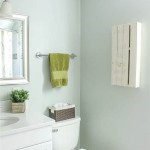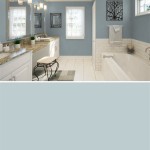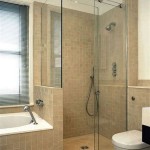Cost to Add a New Bathroom: A Comprehensive Guide
Adding a new bathroom to a property can significantly increase its value and improve the overall quality of life for its occupants. However, it is a substantial investment, and understanding the associated costs is crucial for planning and budgeting. The cost of adding a new bathroom can vary widely depending on numerous factors, including the size of the bathroom, the quality of materials chosen, the complexity of the plumbing and electrical work, and the geographic location. This article provides a comprehensive overview of the costs involved in adding a new bathroom, helping homeowners make informed decisions.
Location and Existing Infrastructure
One of the most significant factors affecting the cost of a new bathroom is its location within the property. Adding a bathroom adjacent to existing plumbing lines is generally less expensive than adding one further away, as it minimizes the amount of new piping required. If the new bathroom is located on a slab foundation, it may involve breaking through the concrete to connect to the main plumbing lines, which can add significantly to the labor costs. Similarly, if the desired location requires moving or rerouting existing electrical wiring, it will increase the overall project expense.
Consideration should also be given to the structural modifications that might be necessary. Adding a bathroom in an area that was not originally designed for plumbing can necessitate reinforcing floors, framing walls, or even altering the roofline. These structural changes add complexity and cost to the project.
Furthermore, the accessibility of the location can influence the cost. If the construction crew has limited access to the site, it may take longer to transport materials and equipment, resulting in higher labor costs. Tight spaces and difficult-to-reach areas can also make the job more challenging, requiring specialized tools and techniques.
The existing electrical capacity of the home must also be evaluated. A new bathroom will require additional electrical circuits for lighting, ventilation, and potentially heated floors or towel racks. If the existing electrical panel is insufficient, it may need to be upgraded, adding another layer of expense.
Materials and Fixtures
The choice of materials and fixtures is a major driver of cost in any bathroom renovation or addition. From the type of flooring to the brand of the toilet, the selections made will directly impact the total project budget. High-end materials like marble countertops, custom-built vanities, and luxury shower systems will significantly increase costs compared to more standard, budget-friendly options.
Flooring options range from ceramic and porcelain tile, which are relatively affordable and durable, to more expensive options like natural stone (e.g., granite, marble) and engineered hardwood. The installation cost also varies depending on the material. Similarly, the type of shower or tub selected can have a large impact. A basic fiberglass shower stall is significantly less expensive than a custom-tiled shower with multiple showerheads and a glass enclosure.
Vanity costs vary depending on the size, material, and style. Stock vanities from big-box stores are generally the most affordable, while custom-built vanities offer more design flexibility but come at a higher price. Countertops, sinks, faucets, and lighting fixtures also contribute to the overall cost, with prices ranging widely depending on the brand and quality.
Furthermore, the choice of toilet can affect the cost. Basic toilets are relatively inexpensive, while more advanced models with features like dual-flush systems or heated seats can add to the expense. The plumbing fixtures themselves, including showerheads, faucets, and valves, also vary in price depending on the style and finish.
It's crucial to carefully consider the balance between aesthetics, durability, and budget when selecting materials and fixtures. Creating a detailed list of desired items and researching their prices can help in developing a realistic budget.
Labor Costs and Professional Fees
Labor costs typically constitute a substantial portion of the overall cost of adding a new bathroom. These costs encompass the fees charged by plumbers, electricians, carpenters, tile installers, and general contractors. The hourly rates and project fees of these professionals can vary depending on their experience, expertise, and location.
Plumbing work is often the most expensive component of the labor cost, especially if the new bathroom requires extensive new piping or modifications to the existing plumbing system. Electricians are needed to install wiring for lighting, ventilation, and outlets, and their fees will depend on the complexity of the electrical work involved. Carpenters may be needed to frame walls, install doors, and build custom vanities, while tile installers will be responsible for laying the flooring and shower tiles.
A general contractor can coordinate the entire project, managing the various tradespeople and ensuring that the work is completed on time and within budget. While hiring a general contractor adds to the overall cost, it can also save time and reduce stress, especially for homeowners who are not experienced in managing construction projects. The contractor's fee is typically a percentage of the total project cost, usually ranging from 10% to 20%.
In addition to the labor costs of the tradespeople, there may also be professional fees for architectural plans, permits, and inspections. Architectural plans are typically required for any significant structural modifications, and building permits are necessary to ensure that the work complies with local building codes. Inspections are conducted at various stages of the project to verify that the work meets the code requirements.
Obtaining multiple quotes from different contractors and tradespeople is crucial for comparing prices and ensuring that the fees are reasonable. It's also important to check their references and verify their licenses and insurance to ensure that they are qualified to perform the work.
The level of customization also influences labor costs. Intricate tile patterns, custom cabinet installations, and unique fixture designs all require more time and expertise from the installers, leading to higher labor expenses.
Unexpected Costs and Contingency
During any construction project, it is essential to anticipate potential unexpected costs and build a contingency fund into the budget. Unforeseen issues such as hidden plumbing problems, structural damage, or code violations can arise during the renovation process, adding to the overall cost. It is prudent to set aside at least 10% to 15% of the total budget as a contingency to cover these unexpected expenses.
For example, when tearing down walls, contractors may discover hidden mold, asbestos, or outdated wiring that needs to be addressed. These issues can require additional remediation work, which can be costly. Similarly, if the building inspector identifies code violations, they must be corrected before the project can be completed.
Changes in design preferences during the project can also lead to additional costs. If the homeowner decides to upgrade materials, add features, or modify the layout after the work has already begun, it can result in change orders, which typically come with additional charges. To minimize the potential for unexpected costs, it is important to have a clear and detailed plan before starting the project and to avoid making changes once the work has begun.
Another potential source of unexpected costs is delays in the project timeline. Delays can occur due to material shortages, weather conditions, or scheduling conflicts with the tradespeople. These delays can result in additional labor costs and potentially increase the overall project expenses.
By anticipating the possibility of unexpected costs and building a contingency fund, homeowners can avoid financial surprises and ensure that the project stays within budget.
Ultimately, the cost to add a new bathroom requires careful planning, thorough research, and realistic budgeting. By considering all the factors discussed above, homeowners can gain a better understanding of the potential expenses involved and make informed decisions about their bathroom addition project. A well-planned and executed bathroom addition can significantly enhance the value and functionality of the home, making it a worthwhile investment.

Cost To Add A New Bathroom In 2025 Average S Tips

How Much Does It Cost To Add A Bathroom 2025 Data Get Site Plan
:strip_icc()/housesprucingbathroom3-7b0fca1959964b7cbcc866ada820aba3.jpeg?strip=all)
This Is How Much It Costs To Add A Bathroom

What S The Average Cost To Add A Bathroom Neighbourly

How Much Does A New Bathroom Cost In 2025 Checkatrade

Bathroom Remodeling How Much Does It Cost To Add A

How Much Does It Cost To Add A Bathroom 2025 Data Get Site Plan

What Is The Cost To Add A Half Bathroom In 2025 Badeloft

Bathroom Remodel Cost Breakdown 2025 Checkatrade

How Much Does It Cost To Add A Half Bathroom 2025 Guide







